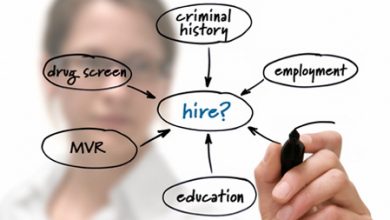Career
What You Should Know Before You Become a Pharmacy Technician
A pharmacy technician has plentiful perks, but be sure read our guide that explains everything you need to know

With the continuous aging of the population and the national health care reforms springing up, there will be an increase in the demand for health practitioners. Pharmacy technicians should expect an increase in demand and available positions in hospitals and pharmacies across the country. The average salary received by pharmacy technicians for 2016 was about $30,000.
Job Description
Part of your job description as a pharmacy technician is to help pharmacists dispense prescription medication to customers or other professional health care providers. You would be expected to put together the necessary data to fill the prescriptions correctly, label the prescriptions, measure medication, and manage the medication inventory. You’ll also be required to receive payments from customers, process their insurance information, as well as coordinate the interaction of the customer with the pharmacists if need be.
Because most pharmacies open at every hour of the day, your work schedule might include all hours and all the days of the week.
Job Security and Outlook
In years to come, a lot of societal factors will influence pharmacy technician’s job security. Because the population keeps aging and life expectancy is higher in general, more people will continue to develop chronic diseases and conditions that require prescription medication for a long time.
The national health care reform will not stop agitating for more people to get coverage, which will lead to an increase in demand for pharmaceuticals. Corporations will not stop investing in research and development, with the hope of discovering more drugs to treat ailments.
With pharmacists moving to assume health care roles like providing wellness services, there might be need for you to handle some tasks that are traditionally taken care of by pharmacists. Supervising the work of junior-level professional and preparing medications are examples of such tasks.
Because of this, employment opportunities for pharmacy technicians are projected to rise by 9% between 2014 and 2024, a more rapid increase than what is obtained in other careers.
You will be under the supervision of a pharmacist, and individual state laws can also limit the scope of your work. For example, some states might allow you to mix medications, get in touch with a doctor’s office in other to obtain authorization to prescribe refills, and also to complete custom orders using automatic dispensers.
A pharmacist technician that works in a clinic or hospital might be mandated to prepare and administer intravenous medications.
Licensing and Education
A lot of pharmacy technicians only have high school diplomas, and there are others who have post-secondary qualifications or associate degrees. They all go through on-the-job coaching and experience, and in many states you will be required to take an exam, obtain the state certification, and take part in some form of continuing education before you will be allowed to practice as a pharmacy technician.
If you decide to enroll in a vocational school or community college, you would have to take bookkeeping, math, law, ethics and medical dispensing classes. You might also be required to work at a hospital or pharmacy as part of the degree program.
You can get certifications from industry organizations like the National Health Care Association and Pharmacy Technician Certification Board, in other to achieve your goals.
Strengths and Skills
If you’re gifted in any of the following departments, you might want to consider becoming a pharmacy technician:
Great Customer Relation Skill: If you love working with different people and enjoy serving others, you would probably love being a pharmacy technician. It involves spending a lot of time with your customers, listening to them, helping them to get the right medication, as well as providing assistance for them in handling issues that involve their doctors and insurance companies.
Pay Attention to Details: Because the customers depend on the doctors and pharmacists to give them the proper medication in the right doses to be able to treat their illness, it is essential for you to pay attention to details. A pharmacy technician must be accurate in dispensing medication and precise in labeling the medication. As you rise in the field, there might be need for you to assess and verify a less experienced pharmacy technician.
Great Communication Skills: You must know how to communicate and listen to doctors, patients, insurance providers, and other health care professionals. There are instances where customers might require additional assistance or instructions from the pharmacist, and part of your job will be to screen such moments and know how to act in every situation.
Excellent Mathematical Abilities: Though you don’t need advance mathematical skills, it is necessary for you to have a good understanding of how to apply math when dispensing medications and to know how to compound orders accurately.
Ability to Multi-Task: Because you will be in situations where you have to face the customer, there is need for you to be organized and possess multi-tasking abilities and be able to prioritize all the activities and questions, happening at once. You must know how to offer quality service to the customer while providing support for the pharmacist at the same time.
How to Get a Job
There are pharmacies in practically every city or town today, so there are lots of job opportunities. You can also look out for the opening of any major pharmaceutical chain so you can search for any close to your location. You can also get leads about job openings close to you through online clearinghouses. Check your local medical facilities, hospitals or clinics to know if they have pharmacies within those facilities. Don’t hesitate to check out the pharmacies at major super markets and grocery chains.
Advantages of Being a Pharmacy Technician
When considering your career choices, you should consider a career as a pharmacy technician because of the numerous benefits involved. Some of such benefits include:
Developing Field: The fact that health care is generally a booming field, means you’ll have access to a lot of opportunities if you decide to become a pharmacy technician. The opportunities today are abundant and many more are expected in future.
Quick Start: Unlike certain fields that might require years of schooling and experience, there are lots of states where you can start and receive your certification within a year. Although there will always be opportunity to learn more, but as a pharmacy technician, you can begin to work, earn money and gain experience while at it.
Making a Difference: If you want to make a difference, you’ll enjoy a health related career where you’ll be helping people improve their health and handle a variety of ailments. You’ll have personal contact with people and have the opportunity to spread a little cheer and kindness to those around you.
Flexibility: The fact that most pharmacies work round the clock, may give you a flexible work schedule. If you need a job that you can do and still maintain your family, education and any other commitment, working as a pharmacy technician helps you negotiate hours that are convenient for you.
Variety: The fact that you have to handle a lot of different tasks, such as interacting with customers, working with pharmacists, filling out prescriptions, or handling insurance companies, means you’ll be faced with a lot of different challenges and experiences.
Though working as a pharmacy technician can be quite rewarding, a lot of people use it as a stepping stone to build other careers in health care. It helps you discover a lot of things about health care services, which you can use to build your future career.




